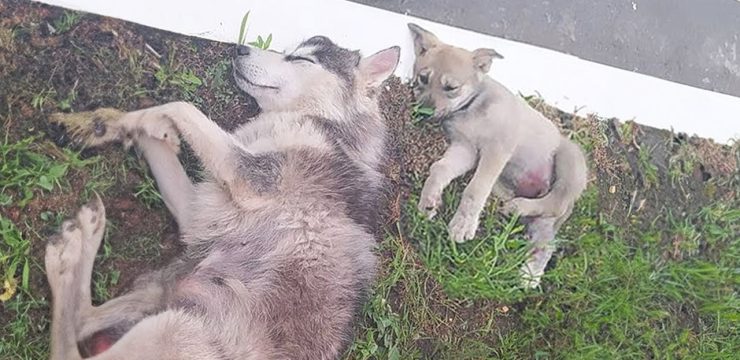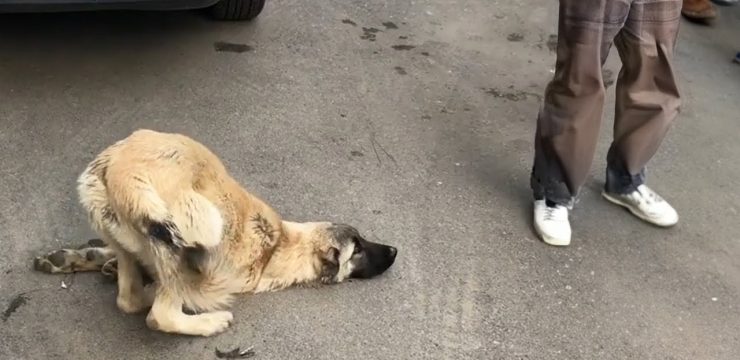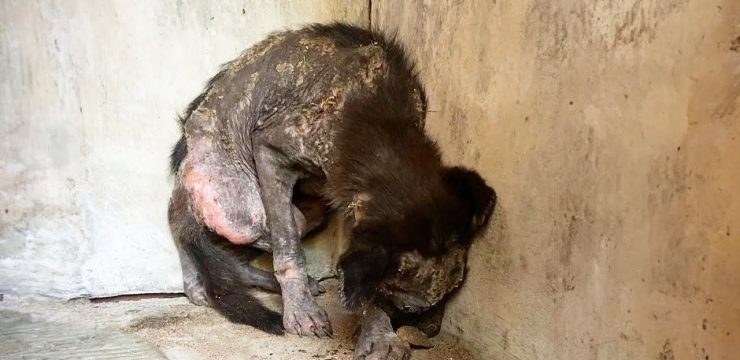A young boy from southern China, once mocked with the nickname “Mickey Mouse” because of balloon-like growths on his head, has made a remarkable recovery thanks to a series of complex surgeries. The boy, identified only as Qibao, is just three years old and was born in Fujian province with a rare skin condition known as congenital naevus. This disorder, although uncommon, is present at birth and causes an overgrowth of pigment-producing cells, leading to large, dark patches of skin—often appearing as giant moles. In Qibao’s case, several of these moles covered his scalp, significantly altering his appearance and setting him apart from other children his age.

Doctors explained to Qibao’s parents that surgery was indeed possible and could drastically improve both his physical condition and quality of life. However, there was a major hurdle to overcome before the mole removal could proceed. Surgeons would need to ensure that once the abnormal skin was removed, there would be enough healthy skin available to cover the exposed areas. To achieve this, they implemented a challenging and emotionally taxing process involving tissue expansion.
This process involved implanting balloon-like devices, called skin expanders, under the healthy parts of Qibao’s scalp. Over time, these expanders were gradually filled with saline, stretching the surrounding skin to generate additional tissue. As the expanders grew, so did the discomfort and social difficulties. Videos and photos shared by the family during this phase of treatment showed Qibao with two large bulges on either side of his head—unnerving images that not only broke his family’s hearts but also attracted the wrong kind of attention. Children and adults alike began calling him names, with “Mickey Mouse” being the most commonly used insult due to the round shape of the expanders.
The emotional toll on the family was immense, but they never wavered in their support for Qibao. His mother, Ms. Chen, speaking through The Daily Mail, shared the emotional weight of the experience. “We wiped away our tears and moved on,” she said, emphasizing the strength and resilience it took to continue with the treatment in the face of cruelty and despair. Her words reflected the emotional journey the entire family endured, balancing hope with heartbreak every day as they watched their little boy carry such a heavy burden—both physically and emotionally.
Boy in China is recovering after surgery to remove two large bulging growths on his head. pic.twitter.com/vAnFIit4KZ
— TaraBull (@TaraBull808) May 18, 2025
Finally, after five long months of intense medical care, Qibao’s transformation was declared a complete success. Surgeons in Shanghai were able to remove the unsightly moles from his scalp, and because of the expanded skin, there was enough tissue to cover the treated areas without the need for external grafts. Post-operative videos captured a touching scene: Qibao, now free of the painful expanders and bearing only soft bandages, smiling and laughing while playing in the hospital nursery. His joy radiated from the screen and touched the hearts of viewers across China and beyond.
Thousands of users on Chinese social media platforms like Douyin were deeply moved by Qibao’s journey. Comments poured in from strangers who were inspired by his courage and by the unwavering strength of his mother. One commenter wrote, “This boy is so brave, and so is his mum. I cried watching this.” Another shared, “I was teased for how I looked, too. This really hit home.” These heartfelt reactions illustrated just how powerful Qibao’s story had become—more than just a medical success, it was a human story of perseverance, love, and triumph over adversity.
According to statistics, congenital naevus affects about one percent of all newborns. In most cases, these birthmarks are small and often harmless, commonly referred to as “brown birthmarks.” But in severe instances like Qibao’s, the size and location of the moles can pose not only cosmetic concerns but potential health risks, including the rare chance of skin cancer later in life. The Children’s Hospital of Philadelphia notes that surgical intervention in such cases is often the recommended course of action. Depending on the mole’s size and location, treatment might require full-thickness skin grafts, where a piece of skin is taken from another part of the body to cover the affected area.
Alternative treatment options include laser therapy and dermabrasion. Laser therapy involves targeting pigment cells with concentrated light energy to reduce the mole’s appearance, while dermabrasion removes the outer layers of skin to allow for smoother regeneration. However, these methods are typically used for smaller lesions or in combination with surgical removal. For children like Qibao with extensive skin involvement, a staged surgical plan with tissue expansion offers the most effective and long-term solution.
Now, as Qibao recovers and begins a new chapter in his life, his story is being embraced as a beacon of hope. It serves as a reminder of the progress in modern medicine and the miracles it can achieve when combined with human determination. Beyond the operating room, it is the courage of a little boy and the fierce love of a devoted mother that brought about this transformation. Their journey is not only about healing the body but also about healing the spirit, defying judgment, and proving that kindness, support, and unwavering belief can help overcome even the most painful of challenges.
Qibao’s face now bears no trace of the growths that once made him a target of ridicule. Instead, it shines with the joy of a child finally free to be himself, unburdened by fear or shame. As he continues to heal, his family hopes that his story will inspire others facing similar medical battles and remind the world that every child deserves a chance to live without judgment or pain. In the end, Qibao’s story is more than a medical victory—it is a beautiful narrative of strength, transformation, and the enduring power of love.





